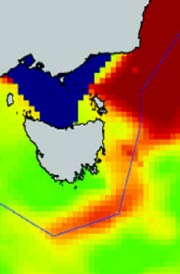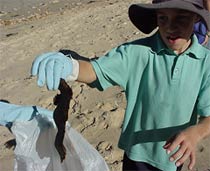|
The
EAC (East Australian Current)
The
East Australian Current is the largest
ocean current close to the coasts
of Australia. Its source is in the
tropical Coral Sea, North East of
Queensland. It moves great quantities
of warm water south along our eastern
coastline to Tasmania.
This
current renews fish stocks, creates
nutrient rich upwellings, disperses
effluent and marine pollution, provides
a warm swimming temperature, assists
yachts and ships and more.
Scientists
have discovered the EAC:
- ferries
up to 30 million cubic metres per
second, with a strong influence
to 500 metres depth and 100 kilometres
width.
- is
strongest in summer, peaking in
February
- generates
huge ocean eddies
- frequently
crosses onto the continental shelf
and moves close inshore
- causes
upwellings where it moves away from
the coast
- can
be slowed down or be reversed by
southerly winds
|

Mean
EAC 1997-2003. Picture courtesy
Craig Johnston, University of Tasmania. |

Carried
in the currents is harmful marine debris.
Beach cleanups like this one in Victoria
collect mainly plastics.
Photo courtesy Brooke Connor. |
The
Leeuwin Current runs along our western
coast, it carries a quarter as much
water as the EAC and peaks in May-June.
EAC
Reference and for more information
search the marine scientific information
at www.marine.csiro.au
|
